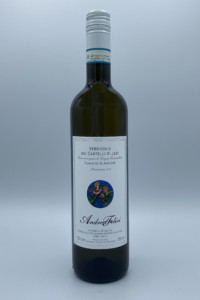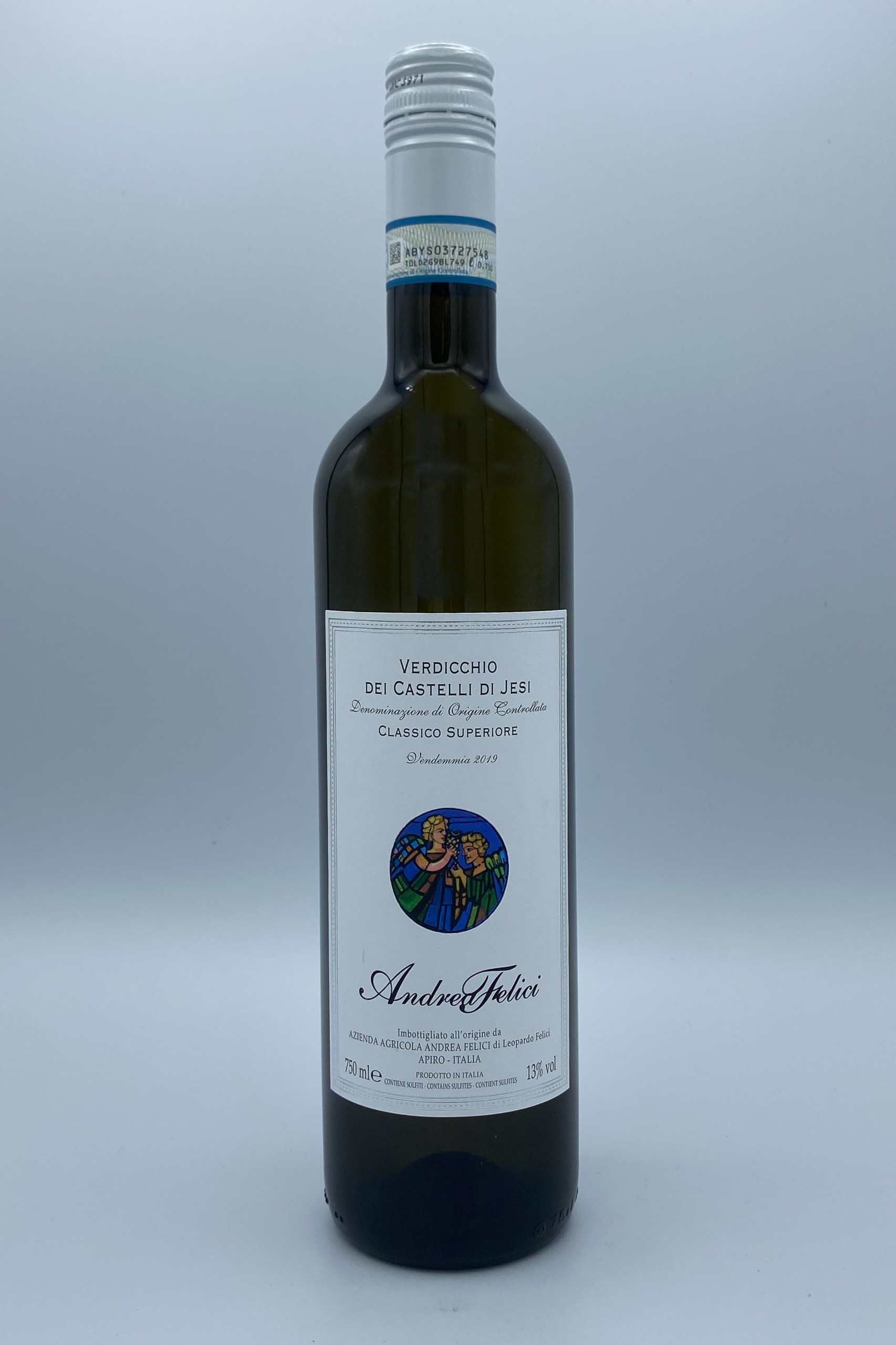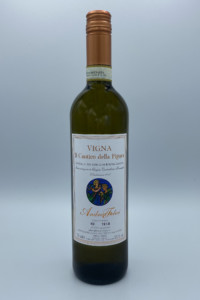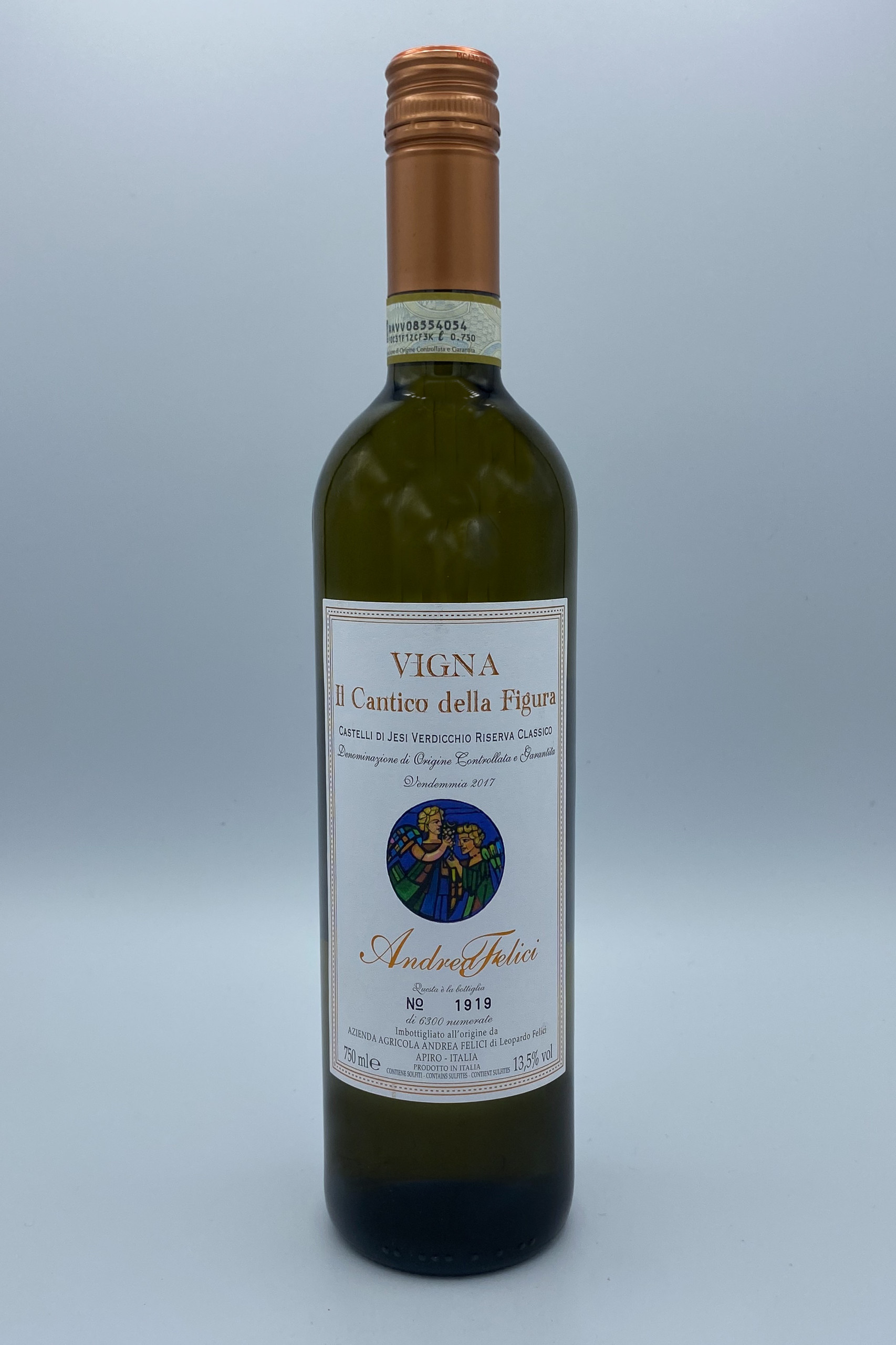Andrea Felici

Leopardo Felici
About
Owner & winemaker: Leopardo Felici
Vineyards: 13ha (70% estate-owned, 30% rented parcels)
Vineyard management: Certified organic
Soils: Calcareous clay
Grapes grown: Verdicchio
Annual production: 80,000 bottles
Quick facts:
- Leo Felici is one of the rising stars demonstrating why Verdicchio deserves to be taken seriously as a complex and ageable white wine.
- No oak is used in the winery, only stainless steel and cement vats.
Focus and precision: it’s how you could describe the Andrea Felici wines, and also the Andrea Felici winemaking project. They grow only one grape variety and make only two wines. It’s all about Verdicchio–as they call it, the “king of whites,” or “the red disguised as a white.” Verdicchio is known for its ability to retain acidity even in hot years, its distinctive white almond finish, and its ability to age beautifully in bottle. Its origins have been lost to history, but it has found its best expression in the Castelli di Jesi appellation in the Marche, which has become renowned for the production of serious, high quality white wines.
Azienda Andrea Felici is in the heart of this region. Apiro, where the azienda is located, is found on the slopes of Monte San Vicino, between 500-600m of elevation, where dramatic temperature swings between night and day mean the grapes ripen slowly, preserving the minerality and the elegant acidity that is the characteristic element of the Andrea Felici wines. Warm days are cooled by breezes from the Adriatic, and rain is plentiful. The old vines have sunk their roots deep into the soils of an ancient riverbed, composed of blue clay and limestone, allowing them to showcase the mineral quality that makes the wines unique.
The estate was founded by Andrea Felici, who began estate-bottling the wines for the first time in 2003. His son Leopardo took over in 2007, after spending time as a sommelier in fine dining restaurants. The azienda remains a family project, united in pursuing the dream of creating a wine with aging potential which, even after many years, continues to show its own identity. To achieve this high quality, they avoid excessive yields, harvest by hand, and age for significantly longer than the appellation requirements.





